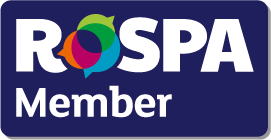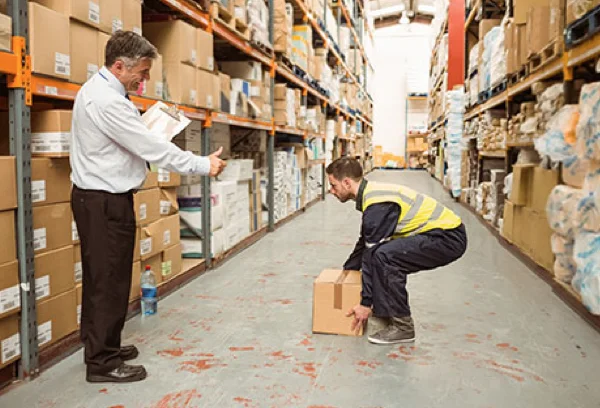
e-Learning Course
 Duration: 1–2 hours
Duration: 1–2 hours Certificate Validity: 3 Years
Certificate Validity: 3 Years Only 30€
Only 30€
e-Learning Course
 Duration: 2 hours
Duration: 2 hours Certificate Validity: 3 Years
Certificate Validity: 3 Years Only 30€
Only 30€
e-Learning Course
 Duration: 2 hours
Duration: 2 hours Certificate Validity: 3 Years
Certificate Validity: 3 Years Only 30€
Only 30€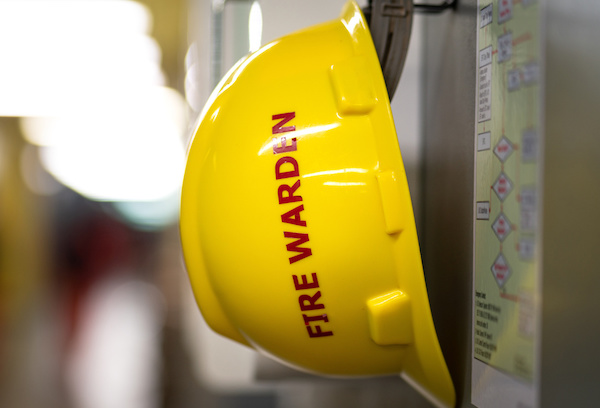
e-Learning Course
 Duration: 2-3 hours
Duration: 2-3 hours Certificate valid for: 3 years
Certificate valid for: 3 years Only 30€
Only 30€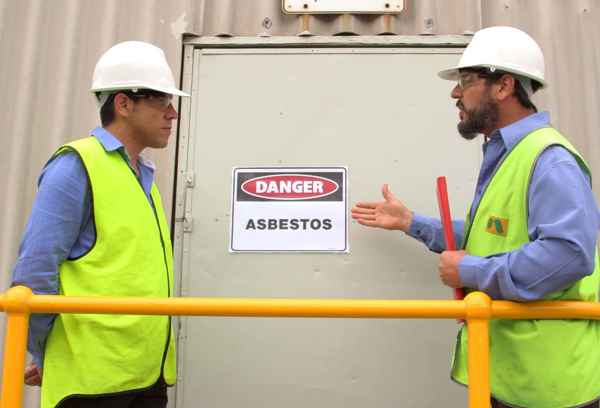
e-Learning Course
 Duration: 2-3 hours
Duration: 2-3 hours Certificate valid for: 3 years
Certificate valid for: 3 years Only 30€
Only 30€
e-Learning Course
 Duration: 2-3 hours
Duration: 2-3 hours Certificate Validity: 2 Years
Certificate Validity: 2 Years Only 60€
Only 60€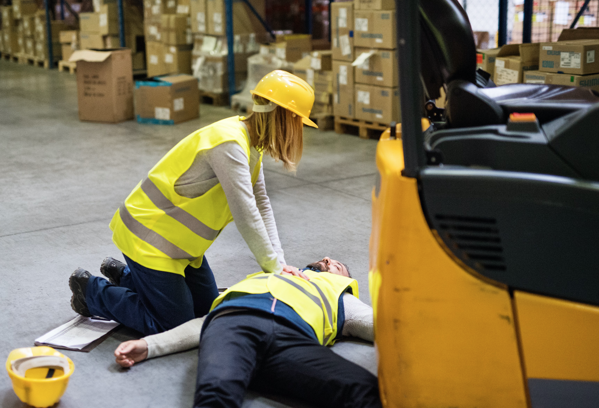
e-Learning Course
 Duration: 2-3 hours
Duration: 2-3 hours Certificate Validity: 2 Years
Certificate Validity: 2 Years Only 60€
Only 60€
e-Learning Course
 Duration: 1-2 hours
Duration: 1-2 hours Certificate valid for: 3 years
Certificate valid for: 3 years Only 30€
Only 30€Level 1 Food Hygiene & Safety Certificate Online
As someone who works in an environment that deals with food, it is essential that you understand the basic principles of food hygiene so you can help ensure any food sold by your business is safe for consumers to eat.
This Level 1 Food Hygiene and Safety course has been designed to educate those who don’t work directly with preparing or handling food, but work in an environment where food is handled elsewhere or who only work with low-risk foods. The course familiarises the learner with basic food hygiene practices so they are able to work safely near food.
Who Should Take This Course?
This Level 1 Food Hygiene and Safety course is designed for workers who are not directly involved with the preparation or handling of high-risk foods but work in an environment where food is present or handled elsewhere. This also includes those who work with wrapped or pre-packaged foods. For example:
- Front of house employees.
- Checkout staff.
- Waiters.
- Bar workers.
- Food delivery drivers (suppliers, takeaway, etc.).
- Kitchen porters.
- Warehouse staff.
If your role involves directly handling or preparing food, then you need to take Level 2 Food Hygiene and Safety
(available for retail, catering, and manufacturing) in order to comply with food handlers’ legal obligations.
If you are a manager or supervisor in a food business, you will require Level 3 Food Hygiene and Safety.
Environmental Health Officer Approved
This course has been audited and approved by Environmental Health Officers: the training materials have been independently reviewed and are verified as containing the necessary knowledge to achieve the level of training specified.
Course Content
| MODULE | DESCRIPTION | |
|---|---|---|
| 1 | Introduction to Food Hygiene | Who is this course for?, why is food hygiene important?, food hygiene law, understanding food safety, and health issues caused by contaminants. |
| 2 | Food Safety Hazards | Microbiological hazards, allergenic hazards, physical hazards, and chemical hazards. |
| 3 | Food Safety Controls | The conditions for bacterial growth, temperature control, controlling time, low and high risk foods, controlling microbiological hazards, allergenic contamination, controlling physical hazards, controlling chemical hazards, food deliveries, refrigeration and pests. |
| 4 | Personal Hygiene | Hand hygiene, hair hygiene, body hygiene and bad habits, protective clothing, and reporting illnesses. |
| 5 | Cleaning Activities | Why is cleaning important?, waste management, cleaning and disinfection, clean as you go, dishwashers, and scheduling cleaning. |
- Understand the importance of food hygiene and recognise the types of health issues poor food hygiene may cause.
- Understand what the law says about food hygiene and how businesses can comply.
- Be able to identify the various types of food safety hazards and know what to do to prevent them from putting food at risk.
- Be able to maintain good standards of personal hygiene and prevent food from being contaminated.
- Understand the importance of thorough cleaning and proper waste management.
- Understand how to carry out effective cleaning activities.
Aims of the Training
By the end of this course learners will:
Assessment
The online assessment is taken on completion of the training material. You will be asked 20 multiple choice questions with a pass mark of 80%. The answers are marked automatically so you will instantly know whether you have passed. If you don't pass don't worry! You can take the test as many times as you need with no extra charge.
Level 2 Food Hygiene and Safety for Manufacturing
All food manufacturers, and anybody involved in the production of food, must understand food hygiene principles and have the knowledge to keep food safe from chemical, physical, bacterial, and allergenic contamination.
This Level 2 course is suitable for anybody who prepares, cooks, packages, or processes food in a manufacturing environment. You will learn what constitutes best practice in regards to controlling food safety hazards, controlling temperatures, food storage, food preparation, personal hygiene, and premises cleaning.
Through completing a variety of written text, interactive exercises, and video content, you will be confident in your ability to keep food safe and know how to comply with food hygiene law.
Who Should Take This Course?
The European Union Regulation (EC) No 852/2004 on the hygiene of foodstuffs requires all food handlers to be appropriately trained in how to carry out their roles safely.
This Level 2 Food Hygiene and Safety for Manufacturing course ensures that you comply with this legal responsibility by providing learners with a thorough introduction to the correct food handling practices.
The course is suitable for food handlers of all disciplines in the food and drink manufacturing industry.
If you are a manager or supervisor in the food and drink manufacturing industry, then our Level 3 Food Hygiene For Manufacturing Course is more suitable for you.
Environmental Health Officer Approved
This course has been audited and approved by Environmental Health Officers: the training materials have been independently reviewed and are verified as containing the necessary knowledge to achieve the level of training specified.
Course Content
| MODULE | DESCRIPTION | |
|---|---|---|
| 1 | Introduction to Food Hygiene and Safety | Key definitions, food handler training, and GMP. |
| 2 | Food Safety Legislation | Food hygiene and the law, food safety management systems - HACCP, TACCP and VACCP, employer responsibilities, enforcement of food safety law, legal notices, prosecution and due diligence. |
| 3 | Microbiological Hazards | Food poisoning, bacteria, pathogenic bacteria, food spoilage, high and low-risk foods, raw foods, controlling bacteria with temperature and time, cross contamination, food preservation, toxins, viral contamination, and preventing microbiological contamination. |
| 4 | Physical, Chemical and Allergenic Hazards | Physical hazards, types of physical contamination, controlling physical contamination, chemical hazards, controlling chemical contamination, allergenic hazards, the 14 named food allergens, anaphylactic shock, controlling allergenic contamination, and allergen labelling laws. |
| 5 | Food Storage | Suppliers and deliveries, food labelling, traceability, use by and best before dates, safe food storage, dry food stores, fruit and vegetable storage, chilled food storage, refrigerator temperatures, frozen food storage, and stock rotation. |
| 6 | Food Preparation | Thawing frozen food, cooking and reheating, taking food temperatures, cooling food, cook-chill and cook-freeze. |
| 7 | Personal Hygiene | Food handler responsibilities, hand hygiene, hand washing procedures, protective gloves, further hygiene considerations, protective clothing, first aid kits, wounds and sores. |
| 8 | Food Premises Design, Layout, Size and Suitability | Food handler responsibilities, food premises and the law, principles of design, food handling equipment and waste management. |
| 9 | Food Premises Cleaning and Disinfection | Why we clean, cleaning and disinfection, cleaning schedules, safe cleaning, clean as you go, six stages of cleaning, cleaning food storage areas and chillers, dishwashers, pests and preventing pests. |
Aims of the Training
By the end of this course, you will:
- Understand your responsibilities, and those of your employer, under UK and EU food hygiene regulations, and be able to explain the principles of food safety management systems.
- Identify microbiological, physical, chemical, and allergenic hazards and understand why it’s important to control contamination and how you can control it.
- Understand how premises should be designed to reduce hazards, and be aware of your responsibilities around cleaning and pest control.
- Understand safe practices around food storage for different types of food, be able to explain the difference between ‘use by’ and ‘best before’ dates, and know how to carry out effective stock rotation.
- Be aware of the importance of personal hygiene, how to carry out proper hand washing procedures, and recognise when it's important to wash your hands.
- Understand how to prepare food safely, including how to thaw, cook and cool food, as well as how to properly take food temperatures.
Assessment
Once you have completed all of the online training material you will be able to take the online assessment.
The assessment consists of 20 multiple choice questions with a pass mark of 80%.
The answers are marked instantly so you will know whether you have passed as soon as you finish.
If you don’t pass the assessment you can review the course material and take the assessment again as many times as necessary at no extra charge.
Food Safety & Hygiene Level 2 Course For Catering
This Level 2 Food Hygiene course has been designed to help anyone who handles, prepares or serves food in the catering industry understand their legal responsibilities and know what constitutes best practice in regards to controlling food safety hazards, controlling temperatures, food storage, food preparation, personal hygiene and premises cleaning.
By law, all food handlers must have an understanding of the basic principles of food hygiene and know how to work safely so as to protect the food they serve from contamination.
The course provides learners with up-to-date food hygiene information using a range of written text, interactive exercises and video content to ensure learners thoroughly comprehend their food safety responsibilities.
- Matches RSPH and CIEH syllabus
- Matches REHIS elementary food hygiene syllabus
- Meets Irish and EU legal requirements for food handlers
- Endorsed by the Institute of Hospitality
- Fully online course and assessment with no time limits
- Approximate duration: 2 hours
- On completion, download and print your certificate
Who Should Take This Course?
The European Union Regulation (EC) No 852/2004 on the hygiene of foodstuffs requires all food handlers to be appropriately trained in how to carry out their roles safely.
This Level 2 Food Hygiene and Safety for Catering course ensures that you comply with this legal responsibility by providing learners with a thorough introduction to the correct food handling practices.
The course is suitable for food handlers in all disciplines of the catering sector, including restaurants, hotels, cafes, bars, fast-food outlets, takeaways, mobile food trucks, kitchens, hospitals, schools and colleges.
If you are a manager or supervisor in any of the above sectors, then our Level 3 Food Safety & Hygiene In Catering Course is more suitable for you.
This certified online training is ideal for people working in positions such as, but not limited to:
- Chef / Cook
- Catering / Kitchen Assistant
- Teacher
- Support / Care / Charity Worker
- Barista
- Child Minder / Nursery Staff
Environmental Health Officer Approved
This course has been audited and approved by Environmental Health Officers: the training materials have been independently reviewed and are verified as containing the necessary knowledge to achieve the level of training specified.
Course Content
| MODULE | DESCRIPTION | |
|---|---|---|
| 1 | Introduction to Food Hygiene and Safety | Key definitions, food handler training, the Food Hygiene Rating Scheme (FHRS) in Ireland |
| 2 | Food Safety Legislation | Food hygiene and the law, food safety management systems, employer responsibilities, enforcement of food safety law, legal notices, prosecution and due diligence. |
| 3 | Microbiological Hazards | Food poisoning, bacteria, pathogenic bacteria, food spoilage, acrylamide, high and low risk foods, raw foods, controlling bacteria with temperature and time, cross contamination, food preservation, toxins, viral contamination, and preventing microbiological contamination. |
| 4 | Physical, Chemical and Allergenic Hazards | Physical hazards, types of physical contamination, controlling physical contamination, chemical hazards, controlling chemical contamination, allergenic hazards, the 14 named food allergens, anaphylactic shock, controlling allergenic contamination, allergen labelling laws and Natasha's Law. |
| 5 | Food Storage | Suppliers and deliveries, food labelling, use by and best before dates, safe food storage, dry food stores, fruit and vegetable storage, chilled food storage, refrigerator temperatures, frozen food storage, freezing and thawing, and stock rotation. |
| 6 | Food Preparation | Thawing frozen food, cooking and reheating, taking food temperatures, cooling food, hot holding, cold holding, and food service. |
| 7 | Personal Hygiene | Food handler responsibilities, hand hygiene, hand washing procedures, protective gloves, further hygiene considerations, protective clothing, first aid kits, wounds and sores. |
| 8 | Food Premises Design, Layout, Size and Suitability | Food handler responsibilities, food premises and the law, principles of design, food handling equipment and waste management. |
| 9 | Food Premises Cleaning and Disinfection | Why we clean, cleaning and disinfection, cleaning schedules, safe cleaning, clean as you go, six stages of cleaning, cleaning food storage areas and chillers, dishwashers, pests and preventing pests. |
Aims of the Course
By the end of the course, you will:
- Understand your responsibilities, and those of your employer, under UK and EU food hygiene regulations, and be able to explain the principles of food safety management systems.
- Identify microbiological, physical, chemical, and allergenic hazards and understand why it’s important to control contamination and how you can control it.
- Understand how premises should be designed to reduce hazards, and be aware of your responsibilities around cleaning and pest control.
- Understand safe practices around food storage for different types of food, be able to explain the difference between ‘use by’ and ‘best before’ dates, and know how to carry out effective stock rotation.
- Be aware of the importance of personal hygiene, how to carry out proper handwashing procedures, and recognise when it's important to wash your hands.
- Understand how to prepare food safely, including how to thaw, cook, cool, reheat, and hold hot food, as well as how to properly take food temperatures.
Assessment
Once you have completed all of the online training material you will be able to take the online assessment.
The assessment consists of 20 multiple choice questions with a pass mark of 80%.
The answers are marked instantly so you will know whether you have passed as soon as you finish.
If you don’t pass the assessment you can review the course material and take the assessment again as many times as necessary at no extra charge.
Level 2 Food Hygiene and Safety for Retail
By law, anybody who works with food must understand the principles of food hygiene and know how to keep food safe.
This includes those who work in the retail sector of the food industry.
This Level 2 course has been written by experts in the industry to ensure you satisfy this legal requirement and know how to keep your customers safe. The content thoroughly covers topics relevant to food retailers, including how to handle pre-prepared food products, management of use-by and best-before dates, and temperature control during food deliveries and distribution.
You will learn about your responsibilities through a range of retail-specific interactive exercises, written text, and video content.
Upon completion of this training, you will be confident in your food hygiene knowledge and have all the skills you need to keep people safe.
- Matches RSPH and CIEH level 2 syllabus
- Matches REHIS elementary food hygiene syllabus
- Meets Irish and EU legal requirements for food handlers
- Endorsed by the Institute of Hospitality
- Fully online course and assessment with no time limits
- Approximate duration: 2 hours
- On completion, download and print your certificate
Who Should Take This Course?
The European Union Regulation (EC) No 852/2004 on the hygiene of foodstuffs requires all food handlers to be appropriately trained in how to carry out their roles safely.
This Level 2 Food Hygiene and Safety for Retail course ensures that you comply with this legal responsibility by providing learners with a thorough introduction to the correct food handling practices.
This course is suitable for food handlers who sell food that is not necessarily consumed straight away.
This includes, but is by no means limited to:
- Market stalls
- Farm shops
- Grocery stores
- Supermarkets
- Butchers
- Bakers
- Fishmongers
- Wholesalers
- Delicatessens
Environmental Health Officer Approved
This course has been audited and approved by Environmental Health Officers: the training materials have been independently reviewed and are verified as containing the necessary knowledge to achieve the level of training specified.
Course Content
| MODULE | DESCRIPTION | |
|---|---|---|
| 1 | Introduction to Food Hygiene and Safety | Key definitions, food handler training, the Food Hygiene Rating Scheme, and the Food Hygiene Information Scheme Scotland. |
| 2 | Food Safety Legislation | Food hygiene and the law, food safety management systems, employer responsibilities, enforcement of food safety law, legal notices, prosecution and due diligence. |
| 3 | Microbiological Hazards | Food poisoning, bacteria, pathogenic bacteria, food spoilage, damaged packaging, high and low-risk foods, raw foods, controlling bacteria with temperature and time, cross contamination, food preservation, toxins, viral contamination, and preventing microbiological contamination. |
| 4 | Physical, Chemical and Allergenic Hazards | Physical hazards, types of physical contamination, controlling physical contamination, chemical hazards, controlling chemical contamination, allergenic hazards, the 14 named food allergens, anaphylactic shock, controlling allergenic contamination, allergen labelling laws, and Natasha's Law. |
| 5 | Food Storage | Suppliers and deliveries, food labelling, traceability, use by and best before dates, stock rotation, safe food storage, dry food stores, fruit and vegetable storage, chilled food storage, refrigerator temperatures, frozen food storage, and freezing and thawing. |
| 6 | Food Preparation, Service and Display | Thawing frozen food, cooking and reheating, taking food temperatures, cooling food, hot holding, cold holding, and food service. |
| 7 | Personal Hygiene | Food handler responsibilities, hand hygiene, hand washing procedures, protective gloves, further hygiene considerations, protective clothing, first aid kits, wounds and sores. |
| 8 | Food Premises Design, Layout, Size and Suitability | Food handler responsibilities, food premises and the law, principles of design, food handling equipment and waste management. |
| 9 | Food Premises Cleaning and Disinfection | Why we clean, cleaning and disinfection, cleaning schedules, safe cleaning, clean as you go, six stages of cleaning, cleaning food storage areas and chillers, cleaning public areas, dishwashers, pests and preventing pests. |
Aims of the Training
By the end of this course, you will:
- Understand your responsibilities, and those of your employer, under UK and EU food hygiene regulations, and be able to explain the principles of food safety management systems.
- Identify microbiological, physical, chemical, and allergenic hazards and understand why it’s important to control contamination and how you can control it.
- Understand how premises should be designed to reduce hazards, and be aware of your responsibilities around cleaning and pest control.
- Understand safe practices around food storage for different types of food, be able to explain the difference between ‘use by’ and ‘best before’ dates, know how to maintain the cold chain, and understand how to carry out effective stock rotation.
- Be aware of the importance of personal hygiene, how to carry out proper hand washing procedures, and recognise when it's important to wash your hands.
- Understand how to prepare and display food safely, including how to thaw, cook and cool hot food, how to display hot and cold food, and how to monitor food temperatures.
Assessment
Once you have completed all of the online training material you will be able to take the online assessment.
The assessment consists of 20 multiple choice questions with a pass mark of 80%.
The answers are marked instantly so you will know whether you have passed as soon as you finish.
If you don’t pass the assessment you can review the course material and take the assessment again as many times as necessary at no extra charge.
HACCP level 1 & 2 Training Course
By law, all food businesses – including catering, retail and manufacturing – must have an effective food safety management system in place.
This HACCP course will introduce learners to the Hazard Analysis and Critical Control Points management system and help you to understand how to comply with the law, how to work safely and efficiently and what each crucial step of the HACCP implementation process entails.
By the end of the course learners will have a thorough understanding of why HACCP is important, how the 7 HACCP principles can be implemented and what can be done to ensure the food handled in their business remains safe for the consumer.
Who Should Take This Course?
This Level 1&2 HACCP course is suitable for employees at all levels within a food business. This includes full-time, part-time and temporary workers.
The course aims to provide a comprehensive introduction to HACCP and teaches learners about what they can do to help their business implement the system and comply with the law.
| Module | Description | |
|---|---|---|
| 1 | Introduction to HACCP |
What is HACCP? Key terms, legislation, benefits of HACCP and enforcing the law. |
| 2 | Food Safety Hazards |
How contamination applies to HACCP, physical, chemical, microbial and allergenic contamination and cross contamination. |
| 3 | Principles and Prerequisites |
The 7 principles, examples of prerequisites, effective prerequisites and assessing prerequisites. |
| 4 | Creating a HACCP System |
The basics of HACCP, creating a HACCP team, describing the products and ingredients, identifying the products’ uses and consumers, constructing a flow diagram and confirming the flow diagram. |
| 5 | The 7 Principles: Hazard Analysis and Control Measures |
The 7 principles of HACCP, hazard analysis, determining critical control points, the codex decision tree and establishing critical limits. |
| 6 | The 7 Principles: Monitoring and Verification |
Monitoring critical control points, establishing corrective actions, establishing verification procedures, reviewing the HACCP plan and record keeping. |
Aims of the Training
By completing this training, you will:
- Understand the importance of having effective prerequisites in place before implementing a HACCP system.
- Know more about identifying food safety hazards and their appropriate control measures.
- Have knowledge of food hygiene legislation and recognise why HACCP is relevant.
- Understand the importance of continually monitoring the HACCP system.
- Understand what's involved in setting up a HACCP system.
- Understand the main categories of food safety hazards.
- Be aware of the 7 principles of HACCP.
Assessment
The online assessment is taken on completion of the training material. You will be asked 20 multiple choice questions with a pass mark of 80%. The answers are marked automatically so you will instantly know whether you have passed. If you don't pass don't worry! You can take the test as many times as you need with no extra charge.
Level 3 HACCP Training Course
By law, all food businesses must ensure that they have implemented an effective food safety management system based on the 7 principles of HACCP in their premises. As a manager or supervisor it’s your responsibility to take part in the planning stages of the HACCP system and ensure that all staff members within the workplace are working safely and in accordance with food safety controls.
This Level 3 HACCP training course is designed to help learners understand more about what’s involved in a successful HACCP food safety management system. The course outlines each essential step of the HACCP planning process and aids you to understand how to identify food safety hazards, select relevant control measures and ensure the HACCP system continues to operate efficiently and effectively.
Who Should Take This Course?
This course is suitable for managers and supervisors working in food premises, including catering, retail and manufacturing businesses. The course is designed to help you comply with the EU Regulation (EC) No 852/2004 on the hygiene of foodstuffs which requires all food businesses to implement and manage an effective food management system based on the principles of HACCP. Regardless of the UK's membership of the EU, the internationally recognised HACCP principles remain just as relevant and are vital to ensuring the highest safety standards in the food sector.
This certified online training is ideal for people working in positions such as, but not limited to:
- Manager / Supervisor
- Lead Engineer
- Director
- Head Chef / Head Cook
- Lead Quality Controller
- Health & Safety Officer
| Module | Description | ||
|---|---|---|---|
| 1 | Introduction to HACCP |
What is food safety management, key terms, what is HACCP, benefits of HACCP and why HACCP is important. | |
| 2 | HACCP Alternatives |
Should I use HACCP? Safer Food Better Business, CookSafe, Safe Catering, ISO 9001:2015, ISO 22000:2005, other national guides and certification schemes. |
|
| 3 | Planning a HACCP System |
Preparing for HACCP, creating a HACCP plan and HACCP success vs failure. |
|
| 4 | Food Safety Hazards |
How contamination applies to HACCP, types of contamination, physical, chemical, microbial and allergenic contamination, top 10 causes of food poisoning and controlling the hazards. |
|
| 5 | Prerequisite Programmes |
What are prerequisites? Examples of prerequisites, effective prerequisites and assessing prerequisites. |
|
| 6 | Creating the HACCP System |
The 7 principles, creating the HACCP team, HACCP team responsibilities, HACCP team skills, describing the products and ingredients, identifying the products’ uses and consumers, constructing a flow diagram and confirming the flow diagram in the premises. | |
| 7 | Principle 1: Hazard Analysis |
What is hazard analysis? The 3-stage approach, hazard analysis documentation, prerequisites/HACCP and useful contacts. | |
| 8 | Principle 2: Critical Control Points |
What is a control measure? What is a critical control point? Overusing CCPs, decision trees and the Codex Alimentarius Commission decision tree. |
|
| 9 | Principle 3: Critical Limits |
What is a critical limit? Critical limit criteria, examples of critical limits and setting critical limits. |
|
| 10 | Principle 4: Monitoring Critical Control Points |
What is monitoring? Effective monitoring, types of monitoring, frequency of monitoring and the monitoring plan. |
|
| 11 | Principle 5: Corrective Action |
What is corrective action? Levels of corrective action, corrective action procedures, examples of corrective action and product recalls. |
|
| 12 | Principle 6: Verification of the HACCP System |
|
|
| 13 | Principle 7: Documentation |
Record keeping, maintaining the HACCP team, maintaining sources of information, maintaining HACCP documentation. | |
| 14 | Implementing the HACCP System |
Implementing HACCP, implementation methods, HACCP training, making HACCP visible and confirming completion. | |
Aims of the Level 3 HACCP Training
By the end of this course learners will:
- Understand why a HACCP food safety management system is important and beneficial.
- Understand food hygiene law and the different food safety management systems that can be chosen.
- Know how to plan and implement a successful HACCP system and avoid the common pitfalls.
- Understand the importance of having effective prerequisite programmes in place.
- Know how to conduct a hazard analysis and identify critical control points.
- Understand the significance of critical limits and corrective action and know why these need to be carefully monitored.
- Know how to validate and verify the HACCP plan and understand the importance of keeping documentation.
Assessment
The online assessment is taken on completion of the training material. You will be asked 45 multiple choice questions with a pass mark of 80%. The answers are marked automatically so you will instantly know whether you have passed. If you don't pass don't worry! You can take the test as many times as you need with no extra charge.
 Average Duration: 2 Hour
Average Duration: 2 Hour
 Digital & Printable Certificate
Digital & Printable Certificate
 Unlimited Exam Attempts
Unlimited Exam Attempts
 Accepted Across Ireland, UK and Europe
Accepted Across Ireland, UK and Europe
 Valid For 3 Years
Valid For 3 Years
 Self-Paced. Available 24/7
Self-Paced. Available 24/7
 Available On All Major Devices
Available On All Major Devices
 Live Student Support
Live Student Support
 Permanent Record Of Training
Permanent Record Of Training
 User Management Tools Available
User Management Tools Available
Online Manual Handling Training Course
Also referred to as Moving and Handling Training.
This Manual Handling Training Course helps employers ensure that they and their employees are sufficiently trained in the principles and practices of safe manual handling.
This course provides the necessary information and training for organisations to understand more about the risks associated with manual handling, how to undergo a risk assessment and how to ensure appropriate control measures are put in place.
It follows the requirements of the Manual Handling Operations Regulations 1992 (MHOR) and provides a practical guide for managing and carrying out safe and healthy manual handling. The course also features videos, diagrams, and downloadable resources to use in your workplace.
- Ensures compliance with Irish Health and Safety legislation
- Matches the CIEH Level 2 Syllabus
- Developed by FETAC Level 6 Instructor♻️
- Approved by QQI and IIRSM
- Fully online course and assessment with no time limits
- Approximate duration: 1 hour
- On completion, download and print your certificate
Who Should Take This Manual Handling Training Course?
The manual handling course is aimed at employees at all levels who may undertake manual handling operations, including the transporting of a load of items by lifting, lowering, pushing, pulling, carrying, manoeuvring, steadying or transporting thereof by hand or by bodily force. This includes, but is not limited to, professions such as:
- Warehouse and factory staff
- Heavy manual labourers
- Construction and building site workers
- Office workers
- Delivery drivers
- Agricultural workers
Course Content
| MODULE | DESCRIPTION | |
|---|---|---|
| 2 | Manual Handling Injuries | types of injury, immediate injuries and musculoskeletal disorders. |
| 3 | Risk Assessments for Safe Manual Handling | what is a risk assessment?, who should carry out a risk assessment?, identifying hazards, LITE, factors that increase the risk of harm, deciding who may be harmed and how, occupations most at risk, evaluating risks, recording the significant findings, reviewing and updating, results of your risk assessment. |
| 4 | Avoiding and Controlling the Risks | employer duties, avoiding manual handling, reducing the risk, team handling, mechanical and automation precautions, personal protective equipment and LITE. |
| 5 | Safe Manual Handling Techniques | lifting and lowering techniques, safe weights for lifting and lowering, carrying, risk assessments and HSE tools, pushing and pulling, and team handling. |
Aims of the Manual Handling Training
Upon completion of this course, you will:
- Understand what is meant by manual handling.
- Be able to explain the common causes of injury and potential long-term damages to health as a result of poor manual handling techniques.
- Understand the legal responsibilities and the duties placed upon employers and employees.
- Be able to identify manual handling hazards.
- Understand how to carry out an effective manual handling risk assessment.
- Understand the control measures that can be put in place to reduce the risk of harm.
- Understand and practise the best way to handle loads to maintain a safe working environment.
Assessment
The online assessment is taken on completion of the training material. You will be asked 20 multiple choice questions with a pass mark of 80%. The answers are marked automatically so that you’ll instantly know whether you passed. If you don't pass don't worry! You can take the test as many times as you need with no extra charge.
Level 2 Health and Safety in the Workplace Training
A thorough understanding of health and safety is essential in all workplaces, regardless of job role and industry. This accredited Level 2 Health and Safety course ensures that you understand the most common health and safety risks in your workplace and the control measures that are needed to keep you safe.
The course covers the most crucial aspects of health and safety that are present in every workplace, such as manual handling, working at height, and fire and electrical safety. It also explains the necessary components of workplace welfare, including workplace stress and conflict.
- Developed by health and safety professionals
- Accredited by CPD and Approved by RoSPA
- Fully online course and assessment with no time limits
- Approximate duration: 3 hours
- Downloadable certificate on completion
Who Should Take This Level 2 Health and Safety in the Workplace Course?
Workers in all workplaces and industries are required to take health and safety training to ensure that they keep themselves, and those they work with, safe.
This course is designed for workers of all abilities and in all environments, including those who work in construction, education, offices, and hospitality. It covers the common health and safety risks that are present in all of these environments.
This certified online training is ideal for people working in positions such as, but not limited to:
- Engineer
- Electrician
- Chef / Cook
- Administrator
- Teacher
This course contains six interactive modules and includes an assessment at the end:
| Module | Description | |
|---|---|---|
| 1 | Risk Assessment |
What is a risk assessment, who should carry out a risk assessment, identify the hazards, decide who might be harmed and how, evaluate the risks and decide on controls, record your findings, and review and update the risk assessment. |
| 2 | Workplace Safety |
Safe systems of work, slips, trips and falls on the same level, falls from height, housekeeping, electrical safety, and fire safety. |
| 3 | Workplace Welfare |
Welfare facilities, first aid, first aid safety signs, workplace stress, drugs and alcohol, and workplace conflict and violence. |
| 4 | Manual Handling and Display Screen Equipment |
Manual handling regulations, reducing manual handling risks, good manual handling techniques, display screen equipment, and workstations. |
| 5 | Hazardous Substances and Working at Height |
Hazardous substances control measures, hazardous substances training, hazardous substances safety signs, working at height, control measures, working at height equipment, and safe use of ladders and stepladders. |
| 6 | Noise, Vibration and Vehicle Safety |
Noise elimination, reduction, and control, Hand-Arm Vibration Syndrome (HAVS) and Carpal Tunnel Syndrome (CTS), employer responsibilities, safe use of vehicles, and pedestrian-vehicle conflict. |
Aims of the Training
By completing this training, you will:
- Have knowledge of key health and safety topics and how to ensure good practice within them.
- Understand the responsibilities of employers and employees under health and safety legislation.
- Understand the importance of, and the key factors in, undertaking a risk assessment to prevent and control hazards.
- Know the hazards and ill health effects associated with specific work activities and processes.
Assessment
The online assessment is taken on completion of the training material. You will be asked 20 multiple choice questions with a pass mark of 80%. The answers are marked automatically so that you’ll instantly know whether you passed. If you don't pass don't worry! You can take the test as many times as you need with no extra charge.
Office Health & Safety Training
This Office Safety course provides learners with an introduction to the common safety hazards that can be found in an office environment.
The course explains how to identify health and safety risks and details what office workers can do to prevent their work tasks and behaviours from causing harm.
All low-risk workplaces, including offices, contain health and safety hazards that need to be carefully controlled.
As an employee, it's important to have an awareness of the risks so that dangers can be identified and action can be taken to prevent injury or ill-health.
Who Should Take This Course?
This Office Health and Safety course is suitable for anyone who works in an office workplace, including managers, supervisors, full-time and part-time employees. The course is designed at an introductory level and so no pre-requisite training or knowledge is required.
Employers have a legal responsibility to ensure that their workers are trained in health and safety matters and this course will help you to comply with that responsibility. This requirement applies to employees of all levels, including part-timers and work experience staff.
- Ensures compliance with Irish Health and Safety legislation
- Developed by health and safety professionals
- Accredited by CPD and Approved by RoSP
- Fully online course and assessment with no time limits
- Approximate duration: 2 hours
- On completion, download and print your certificate
Course Content
| MODULE | DESCRIPTION | |
|---|---|---|
| 1 | Introduction to Office Health and Safety | Including statistics, benefits of health and safety, health and safety law, employer and employee responsibilities and types of office hazards. |
| 2 | Slips, Trips and Falls, Electrical Safety and Fire Safety | Including slips, trips and falls, electrical safety and fire safety. |
| 3 | Manual Handling, Hazardous Substances and Display Screen Equipment | Including manual handling, hazardous substances and display screen equipment. |
| 4 | Stress, Welfare Provisions and First Aid | Including work-related stress, mental health, noise, lighting and heating, workplace first aid and recording accidents. |
Aims of the Course
By the end of this course, learners will:
- Understand why health and safety rules and regulations are important for office workplaces.
- Recognise their health and safety responsibilities and understand where common office safety hazards can be found.
- Understand how to prevent and manage slips, trips and falls in the office.
- Know how to use electrical equipment safely and prevent workplace fires from starting.
- Understand the importance of carrying out manual handling and chemical handling activities with care.
- Know how to set up a desk or computer workstation ergonomically so as to prevent discomfort.
- Understand more about how to prevent workplace stress.
- Understand the first aid requirements of an office and recognise why it's important to report workplace accidents and injuries.
Assessment
The online assessment is taken on completion of the training material. You will be asked 15 multiple choice questions with a pass mark of 80%. The answers are marked automatically so that you’ll instantly know whether you passed. If you don't pass don't worry! You can take the test as many times as required with no extra charge.
COURSE CONTENT
| Module | Description | |
|---|---|---|
| 1 | Introduction and Legislation | The risks, Work at Height Regulations, employer duties, and employee duties. |
| 2 | Work at Height Risk Assessments | What is a risk assessment?, identifying hazards, deciding who may be harmed, evaluating risks, recording findings, and reviewing and updating. |
| 3 | Avoiding, Preventing and Minimising Risks | Avoiding work at height, preventing falls, reducing the consequences of a fall, personal protective equipment, selection of work equipment, fragile surfaces, vehicles, training, inspection of work equipment, and emergency procedures. |
| 4 | Work at Height Equipment | Mobile towers, erecting mobile towers, safe use of mobile towers, low level access platforms, Mobile Elevating Work Platforms (MEWPs), safe use of ladders and stepladders, and securing ladders. |
Aims of the Working at Height Training
- Understand the main features and requirements of the Work at Height Regulations.
- Give examples of common working at height tasks and understand the associated hazards and risks.
- Identify the factors that contribute to persons and objects falling from height.
- Describe the control measures that control and reduce the risk of falls from height.
- Understand the proper use of access and work at height equipment and safe methods of access to reduce or eliminate the risk of falls.
Abrasive Wheels Training Course
Nearly half of all accidents resulting from abrasive wheels happen due to unsafe working practices and operator errors. If you work with abrasive wheels then following strict health and safety practices is paramount to protect both yourself and others from harm.
This Abrasive Wheels course will provide you with an introduction to working safely with abrasive wheels so that you can understand the risks and know which control measures are needed to prevent injury and ill-health.
Who Should Take This Course?
This course is suitable for anyone who uses abrasive wheels in their work activities. The course is particularly relevant for those who use bench grinders, pedestal grinders and angle grinders. Although the training doesn't cover the use of specialist grinding machines, the health and safety information throughout the course is still applicable. This course has been written at an introductory level and no pre-requisite training is required. Experience of using abrasive wheels would be advantageous.
This certified online training is ideal for people working in positions such as, but not limited to:
Engineer
Builder / Floor Layer / Bricklayer
Electrician
Carpenter / Joiner / Fitter
Site / Project Manager
Welder
Course Content
The course is divided into four accessible, interactive modules and also includes an assessment at the end:
| Module | Description | |
|---|---|---|
| 1 | Introduction to Abrasive Wheels |
Types of abrasive wheels, dangers of abrasive wheels, abrasive wheels and the law, manufacturers responsibilities, employer responsibilities, employee responsibilities, HSE guidance. |
| 2 | Risk Assessment |
What is a risk assessment?, who should carry out a risk assessment?, Step One: Identifying hazards, Step Two: Decide who might be harmed and how, Step Three: Evaluate the risks, Step Four: Record the findings, and Step Five: Review and update. |
| 3 | Safe Practices for Abrasive Wheels |
The hierarchy of control, wheel speed, wheel handling and storage, wheel mounting, mechanical guards and work rests, safe working practices, inspections and checks and safely dressing abrasive wheels. |
| 4 | Further Abrasive Wheel Hazards and Controls |
Prevention of eye and face injuries, harmful dusts, vibration control, noise reduction and control, fire risks, electrical safety, hand-held grinding and cutting-off tools, training, communication and monitoring, Reporting of Injuries, Diseases and Dangerous Occurrences Regulations 2013 (RIDDOR), first aid and emergency procedures. |
Aims of the Training
By completing this training, you will:
- Identify the main types of abrasive wheels and their equipment, and will understand the hazards and risks associated with them.
- Understand the legal requirements placed on manufacturers, employers and employees for the safe use of abrasive wheels.
- Know how to carry out a risk assessment for the safe use of abrasive wheels.
- Be aware of the control measures needed to reduce or eliminate the risks associated with abrasive wheels,
including harmful dusts, vibration, noise, fire and electrical risks. - Understand how to safely handle, store, mount, use, dress and inspect the main types of abrasive wheels.
Assessment
The online assessment is taken on completion of the training material. You will be asked 20 multiple choice questions with a pass mark of 80%. The answers are marked automatically so you will instantly know whether you have passed. If you don't pass don't worry! You can take the test as many times as you need with no extra charge.
COURSE CONTENT
| Module | Description | |
|---|---|---|
| 1 | The Primary Survey | The aim of first aid, key annual statistics, first aid regulations, your first aid box and the primary survey: danger, response, airway, breathing. |
| 2 | The Secondary Survey | Steps of the secondary survey, when to call an ambulance, the recovery position, unconscious casualties, choking, wounds and bleeding, applying a bandage and shock. |
| 3 | Treating Secondary Injuries | Burns and scalds, eye injuries, head injuries, fractures and broken bones, dislocations and spinal injuries. |
| 4 | Resuscitation (CPR) | Administering CPR, CPR for children and infants, defibrillators (AEDs) and extra things to consider. |
| 5 | Secondary Illnesses and Conditions | Asthma, allergic reactions and anaphylaxis, diabetes, epilepsy, heart attacks and strokes. |
| 6 | Further Secondary Illnesses and Conditions | Hyperventilation, nosebleeds, sprains and strains, making an arm sling, poisoning, drowning and recordkeeping. |
Aims of the Workplace First Aid Course
- Understand workplace first aid regulations.
- Know how to conduct a primary survey on a casualty.
- Know how to administer CPR to a casualty.
- Know how to put casualties in the recovery position.
- Be able to deal with and respond to choking, wounds, bleeding and shock.
- Be able to deal with and respond to burns, eye and head injuries, fractures and dislocations.
- Know how to care for people suffering from asthma attacks, allergic reactions, nosebleeds, diabetic emergencies, epileptic seizures, heart attacks and strokes.
- Be able to deal with and respond to hyperventilation, fainting, sprains and strains, poisoning and drowning.
- Understand the importance of recordkeeping.
COURSE CONTENT
| Module | Description | |
|---|---|---|
| 1 | Types of Fires and Extinguishers | Why is fire extinguisher training important, the fire triangle, classes of fire, and types of extinguishers. |
| 2 | Preparing to Fight a Fire | Who should fight fires, what should you do before fighting a fire, when should you use an extinguisher, and when should you fight fire with a blanket. |
| 3 | Using Fire Extinguishers Safely | Selecting an extinguisher, the PASS technique, basic steps for using an extinguisher, how to use water extinguishers, how to use ABC powder extinguishers, how to use M28 and L2 powder extinguishers, how to use foam extinguishers, how to use carbon dioxide extinguishers, how to use wet chemical extinguishers, how to use a fire blanket, and what to do if you can't put out a fire. |
Aims of the Training
- The fire triangle and the different classes of fires.
- The various types of fire extinguishers that workplaces may use.
- What the responsibilities of fire wardens are regarding fire extinguishers and fighting fires.
- Which extinguishers you can use to fight certain classes of fires.
- How to assess the situation if a fire starts and what first steps you should take before you attempt to fight it.
- How to use the basic PASS method to use extinguishers.
- When and how to use a fire blanket.
- The specific techniques you must use for certain extinguishers to ensure safety and effectiveness.


